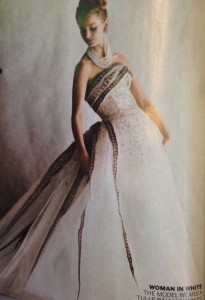Mr. Fairlie’s protest about others’ propensity to burden him with unnecessary details, irrelevant, in his eyes, to his own life assures the reader of his lack of affection for anyone but himself and causes us to doubt the reliability of his narrative. He relates that Fanny was given “two letters, one for me, and one for a gentleman in London. (I am not a gentleman in London–hang the gentleman in London!)” (Collins 341). While this quotation might make us laugh, we can also apply its sentiment to another character in the text, one whose exclusion of some details and selective inclusion of others is less overt. That character is Walter Hartright.
Walter, in his role as editor of the text, has chosen very deliberately and selectively whose narrative is included in this story, despite his claim that every detail “from beginning to the end of the disclosure” will be related to the reader (9). Yet, we are only offered certain perspectives, and each has been edited to an unknown extent by Walter. Pamela Perkins and Mary Donaghy go so far as to suggest that Walter has “overtly deceived [the reader] about his motives,” arguing that he claims to be recording the narrative to establish Laura’s true identity, but is in fact more concerned about property and his own heroic status (Perkins & Donaghy 394). He is editing the text according to what interests him, just as Mr. Fairlie only wishes to hear what is absolutely essential to him.
It is important to note which perspectives we are given access to, and under what circumstances. In terms of reliability, Marian’s diary is perhaps the only account in the novel which was written unprompted by Walter, and even so, we are unsure the extent to which he edited it, or even if we are presented the diary in full. Similarly, we never hear from Laura, around whom the entire plot revolves. Her trip to the continent after her marriage to Sir Percival is the largest span of time left unaccounted for by the narrative, and this in spite of “her letters” which she writes to Marian during her travels (Collins 200).
One possible explanation behind Walter’s exclusion of Laura’s written account from the narrative might be that he does not wish to read about her time with Sir Percival. Yet, Marian’s diary, to which Walter has access, informs us that “the name of her husband is only mentioned in her letters, as she might mention the name of a friend who was travelling with them” (200). We are left to wonder why, then, Walter has chosen to essentially silence Laura.
Perkins and Donaghy comment that Marian is similarly oppressed by Walter in the latter half of the novel, and that “she becomes shadowy and less interesting” (396). The Woman in White is a text in which the women are smothered under the ‘protection’ of Walter, and in spite of his good intentions, we are left with women who are shadows of their former selves. It is never made clear whether Laura’s mental faculties are fully recovered, and formerly independent Marian, content with the prospect of teaching Walter and Laura’s children to say “‘We can’t spare our aunt!'” resigns herself to a life of domesticity (621).
